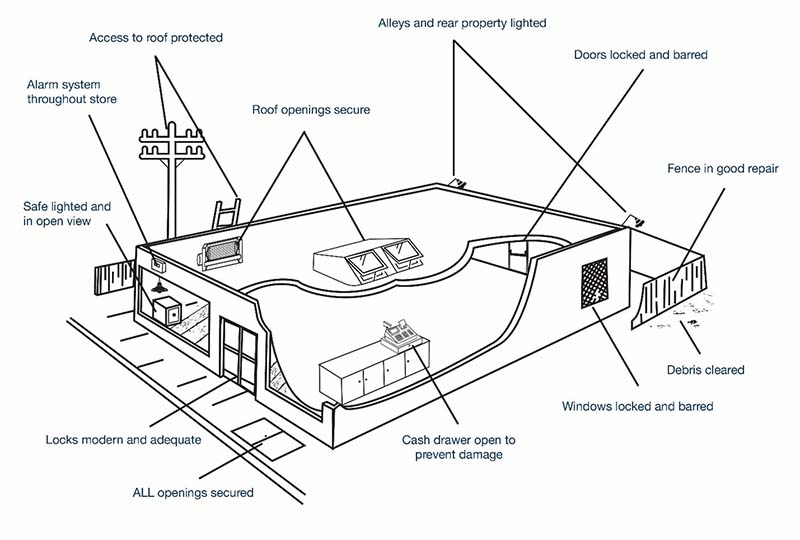Help Detect and Prevent Burglary

As technology improves, the ability for burglars to infiltrate buildings is becoming more advanced and harder to detect. Entry into buildings can be gained through conventional openings, such as doors and windows.
Additional care should be applied to walls, roofs and other accessible openings.

According to the Federal Bureau of Investigation, it is estimated that over 1.1 million burglaries took place in 2019. Of these burglaries, victims suffered $3 billion in property losses. Just under 40 percent of these burglaries took place in offices and stores. Today’s technology can reduce the risk of a loss and help protect your employees.
Smart Cameras
Today’s smart cameras are inexpensive and can be easy to install on properties. Businesses should consider installing external cameras that can view parking lots and key entrances. Smart cameras can trigger an alert to a monitoring system or cell phone to detect motion near a door. The device can then begin recording and can livestream or record the event taking place, even at night. In some cases, users can alert the police from an app while watching the livestream. The recordings can then be saved to a cloud service and given to the authorities.
Lighting
Organizations often have multiple buildings on one property. Burglars typically avoid areas that are well-lit to decrease the chance of them getting detected. Organizations can reduce the chances of an unnoticed burglar by:
- Illuminating all entrances and exits;
- Locating indoor lighting near windows so that intruders can be seen from the street or sidewalk;
- Planting or removing vegetation so that it does not provide hiding places near doors or windows; and
- Lighting all paths that lead between buildings and parking lots.
Electronic and Smart Locks
Enhanced technology has created the opportunity for organizations to control access throughout buildings and the offices within them. Many companies have implemented scannable badges and RFIDs (Radio Frequency Identification Cards) that can be used to unlock doors and prevent unauthorized access to buildings. Even today, simple hackers can duplicate ID cards when coming within a few feet of an employee. Other locks may require a fingerprint scanner or an access number that is unique to each employee. While these types of locks can be more secure than a traditional lock, access must be controlled by IT and security should be closely monitored.
Protect Valuable Items
Cash, checks and other valuable items can easily be stolen by thieves. Often, they are untraceable and can go unnoticed for days after they are stolen. You can help reduce the chances of theft by:
- Keeping the minimum cash needed on hand;
- Emptying cash registers at night and leaving empty drawers in plain view;
- Locking up items of high value with additional security;
- Installing a safe or alarm system that can be used to contact the authorities;
- Partnering with local authorities and businesses to keep up to date on the current situations in your area; and
- Reducing cash transactions. Consider only accepting credit cards or touchless payment.
Resources









